
 Image: Adam Patrick Murray / IDG
Image: Adam Patrick Murray / IDG
In a fall crammed with hardware releases, Intel’s new 13th-generation Raptor Lake CPUs may be the most feral of the lot. Raw, unapologetic power is one aspect of it—chip makers are now shooting as much juice possible through processors to make them scream during tasks, and Intel further embraces this approach.
But performance isn’t what makes Raptor Lake borderline savage. Certainly, Intel’s latest is impressive, as demonstrated by the top-end Core i9-13900K. The way it posts benchmark numbers brings to mind loud, ferocious American muscle cars.
No, it’s the timing of its arrival. AMD and Intel’s fight for superiority is no longer a genteel, scripted affair. Instead, we’ve moved into blood sport. Several weeks ago, Intel cast a shadow over the launch of AMD’s juggernaut Ryzen 7000 chips by announcing 13th-gen details. Today, its flagship processor now slips into the lead on multiple fronts—leaving AMD with barely any time to savor the triumph of its Zen 4 release.
A huge upgrade, gen-on-gen
Core i9-13900K
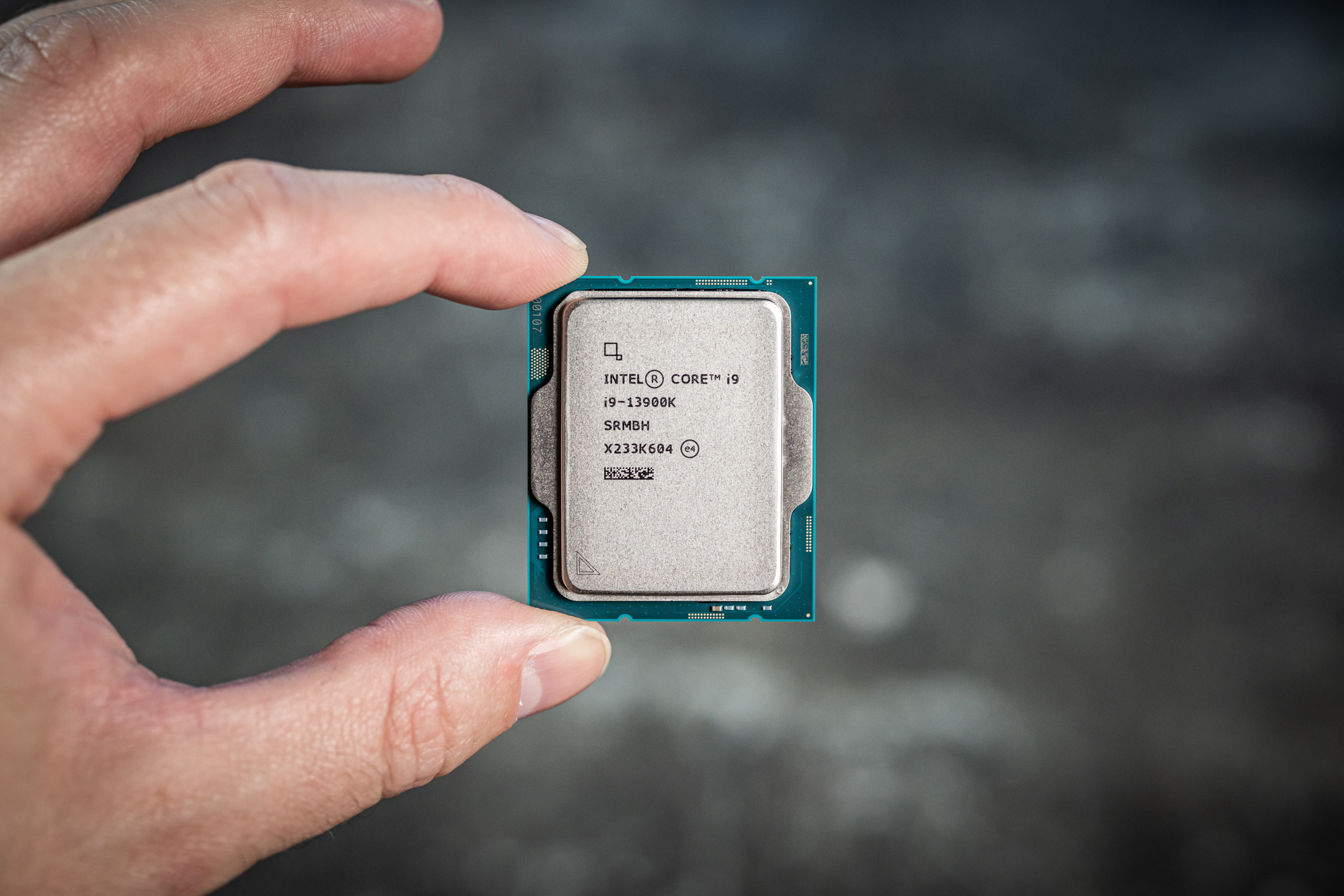 Price When Reviewed:$659.99Best Prices Today:$659.99 at Antonline | $659.99 at B&H Photo | $659.99 at Newegg
Price When Reviewed:$659.99Best Prices Today:$659.99 at Antonline | $659.99 at B&H Photo | $659.99 at Newegg
Intel’s fresh edge on AMD is a product of substantial improvements on its 12th-gen Alder Lake CPUs, which were already no slouch when they launched. Built on the same Intel 7 process, Raptor Lake boasts much faster clock speeds and more cores. It also comes with an increase in power draw.

Intel
Intel
Intel
The initial line-up includes the $589 Core i9-13900K, $409 Core i7-13700K, and $319 Core i5-13600K, as well as their KF counterparts lacking integrated graphics. (You can read more about the full plans for Raptor Lake and its technical details in our overview of the initial announcement.) The flagship 13900K actually costs less than its AMD rival, the $699 Ryzen 9 7950X.
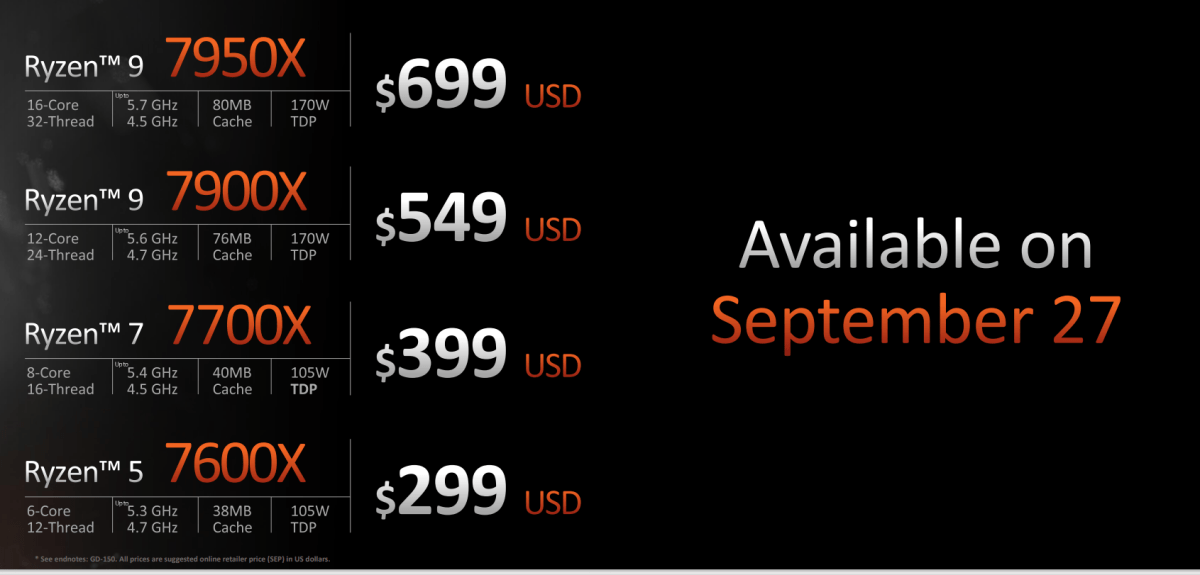
AMD
AMD
AMD
Raptor Lake also has the advantage of launching into more plentiful motherboard and memory options than Ryzen 7000. Since these 13th-gen parts are an iteration of Alder Lake, they use the same LGA 1700 socket, offer the same number of PCIe 5 and PCIe 4 lanes (16 and 4, respectively), and still support DDR4 memory. Accordingly, they’re compatible with 12th-gen motherboards. No need to wait for Z790 if you’ve spotted a better (and cheaper) choice available now. You can also opt for slower DDR4 RAM with some Intel motherboards if you need to save cash, while AMD’s AM5 motherboards—with an eye towards a multi-year CPU upgrade path—require DDR5.
Because of its lineage, some internet commenters may dismiss Raptor Lake as merely an unplanned refresh, meant to keep Intel relevant. But make no mistake—this isn’t a minor update. Intel’s pre-launch claims of a 15 percent uptick for single-threaded performance and up to 41 percent for multithreaded compared to 12th-gen Alder Lake aren’t far off the mark.
Intel Core i9-13900K performance
For this particular review, we’ll be looking at Intel and AMD’s flagship chips, both past and present. The brawl is primarily between Intel’s 24-core, 32-thread Core i9-13900K and AMD’s 16-core, 32-thread Ryzen 9 7950X, of course. But seeing how they compare against the previous generation 16-core, 24-thread Core i9-12900K and 16-core, 32-thread Ryzen 9 5950X is useful too.
These benchmark results are particularly important when comparing Intel and AMD’s offerings—because of Intel’s hybrid architecture that combines lower-power efficiency cores and higher-octane performance cores, you can’t compare its core counts directly against AMD’s. You have to examine the numbers to get a bead on performance differences, especially in the apps you’ll use most.
In general, both the Core i9-13900K and 7950X post incredibly fast scores and easily tear past their predecessors. But each holds a lead in different areas, and if you’re a person eyeing this chip for heavy workloads, Ryzen 7000 could still be the better choice. Our YouTube review (embedded above) dives deep into the details, but for the main takeaways, read on.
Note: Our benchmarks were performed by pairing each of the four chips mentioned above (13900K, 12900K, 7950X, 5950X) with an RTX 3090 Founders Edition graphics card, AIO CPU cooler, PCIe 4.0 SSD, and 32GB RAM (DDR5-6000 MT/s for the Intel CPUs and 7950X, DDR4-3600 MT/s for the 5950X). Software was run in Windows 11 Home (22H1). For full test bench details, jump to the end of this article.
Production
We’ll start with the main reason to buy a Core i9-13900K—multithreaded tasks that put every bit of the processor to work.
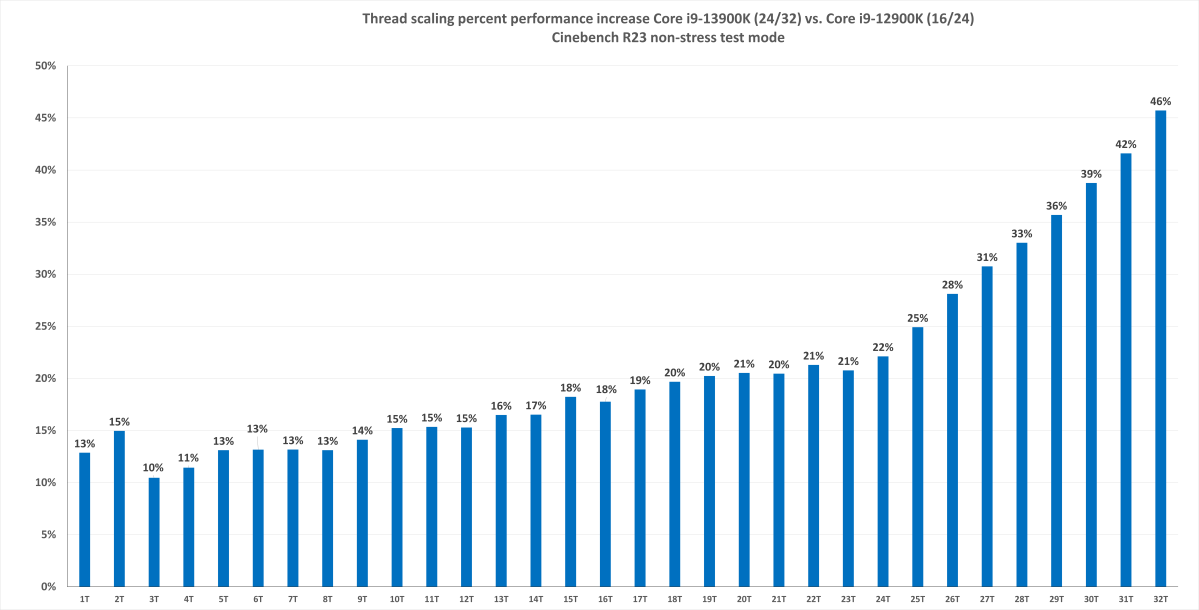
Gordon Mah Ung / PCWorld
Gordon Mah Ung / PCWorld
Gordon Mah Ung / PCWorld
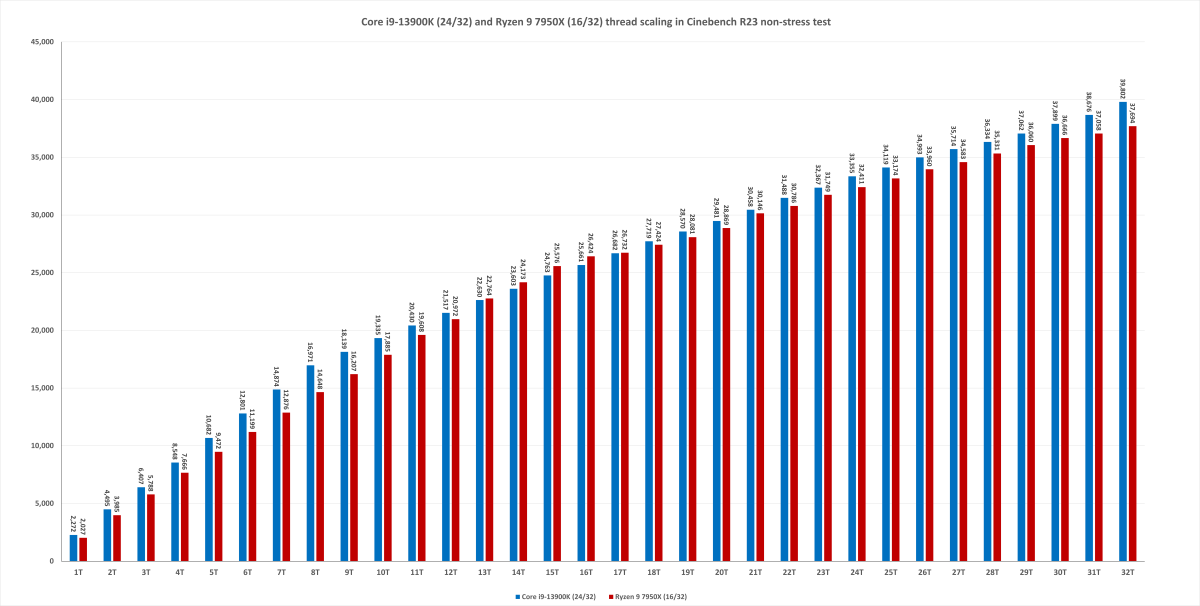
Gordon Mah Ung / PCWorld
Gordon Mah Ung / PCWorld
Gordon Mah Ung / PCWorld
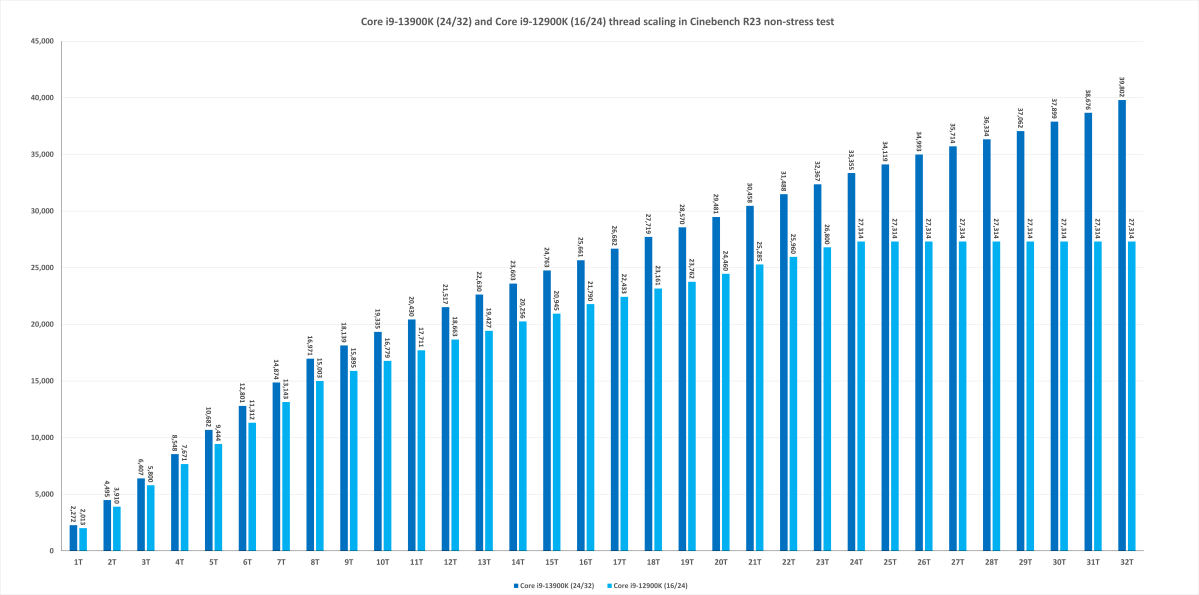
Gordon Mah Ung / PCWorld
Gordon Mah Ung / PCWorld
Gordon Mah Ung / PCWorld
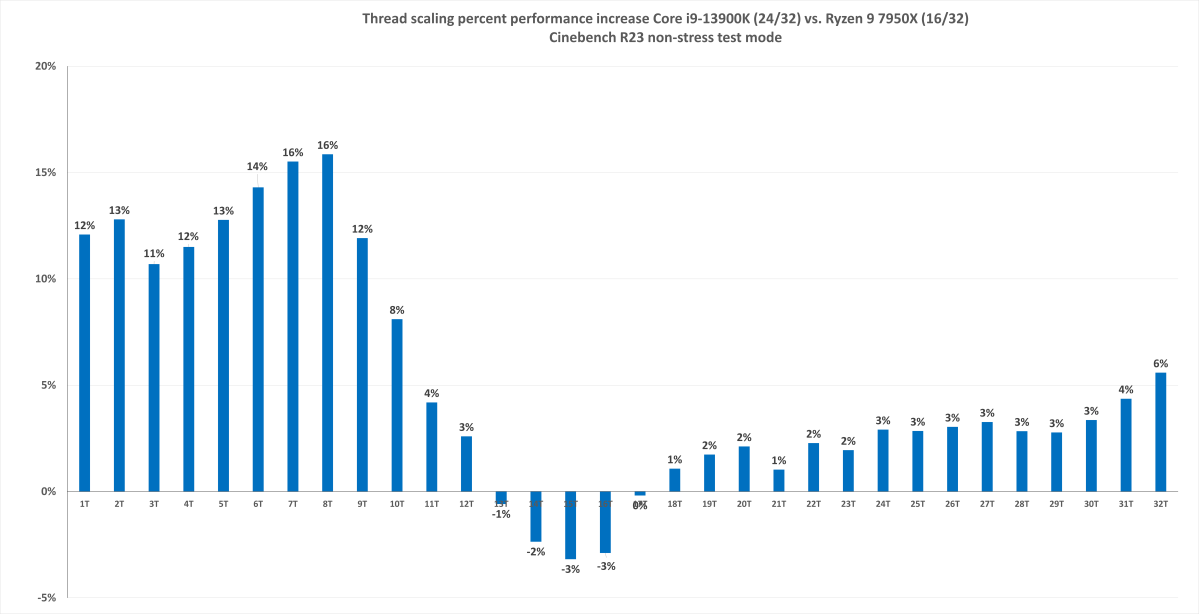
Gordon Mah Ung / PCWorld
Gordon Mah Ung / PCWorld
Gordon Mah Ung / PCWorld
To view these benchmark charts at full size, right-click (PC) or long press (mobile) on the image and then open it in a new tab or window.
Looking at the raw scaling of multithreaded performance in Cinebench’s R23 rendering benchmark, you can see the enormous gains of the Core i9-13900K over the 12900K. Accordingly, as you might expect, the 13900K leaves its predecessor in the dust in rendering and encoding. Across our relevant benchmarks, it breezed past the 12900K, even exceeding Intel’s early statements that promised an uplift of up to 41 percent. Our high was a 48 percent improvement in V-Ray.
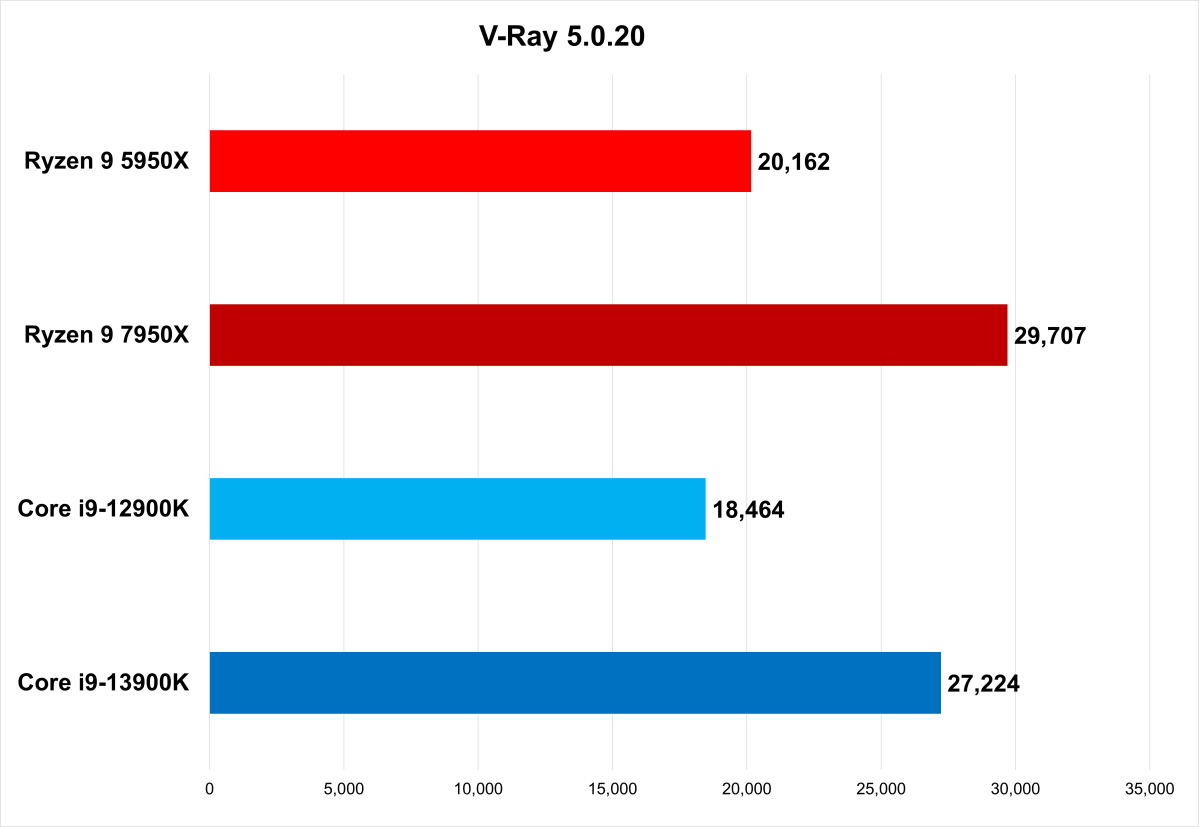
Gordon Mah Ung / PCWorld
Gordon Mah Ung / PCWorld
Gordon Mah Ung / PCWorld





For benchmarks measured in time (seconds), shorter bars are better. Otherwise, longer bars indicate better performance. To view our benchmark charts at full size, right-click (PC) or long press (mobile) on the image and then open it in a new tab or window.
These performance gains allow the 13900K to scrap with the 7950X on near-even footing. In some apps, like Cinebench, Intel comes out as the frontrunner. In other applications, like Blender and V-Ray, the 7950X still hangs onto the top spot. And both chips still comfortably hold their own when not in first position.

Gordon Mah Ung / PCWorld
Gordon Mah Ung / PCWorld
Gordon Mah Ung / PCWorld


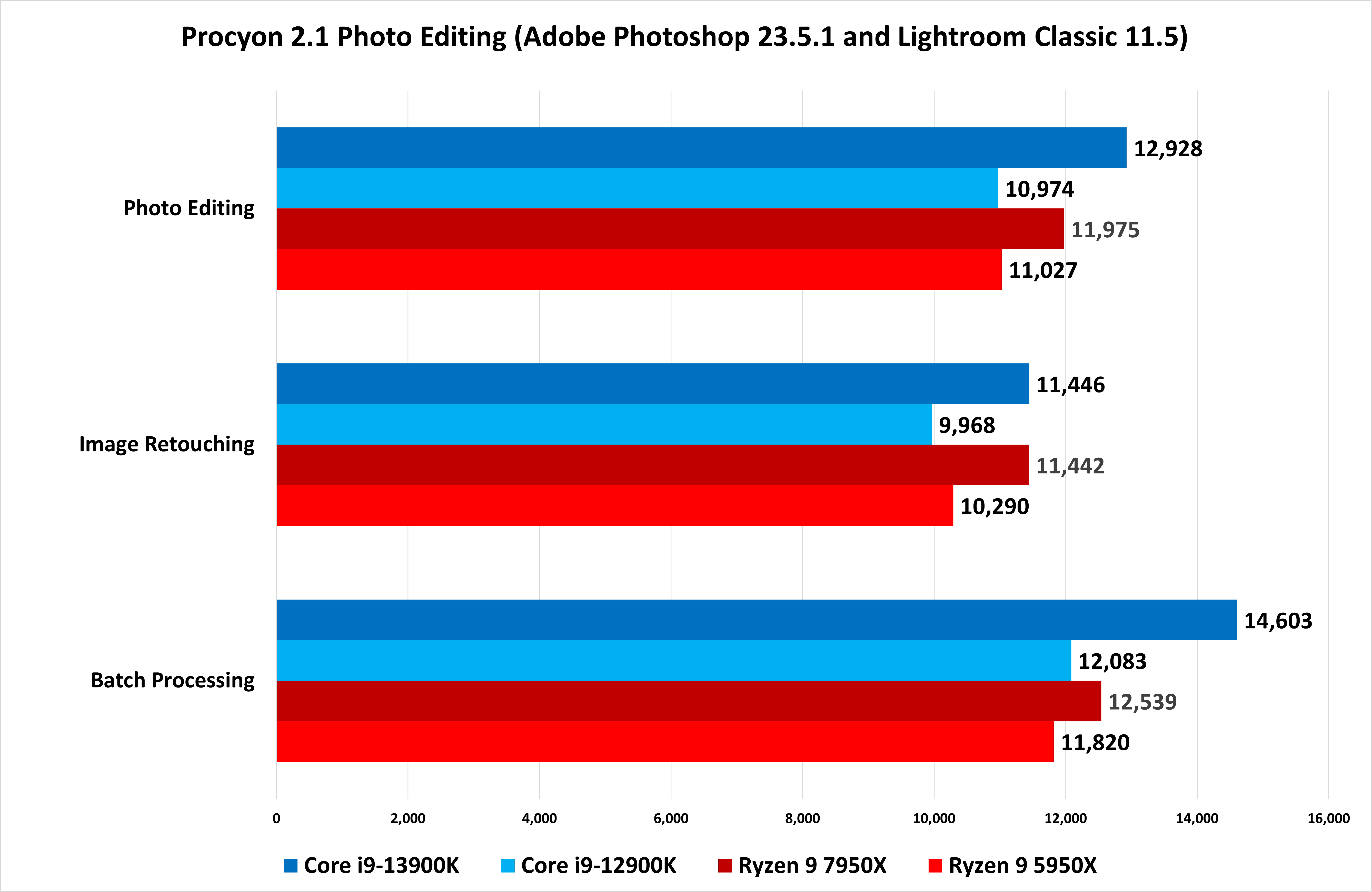
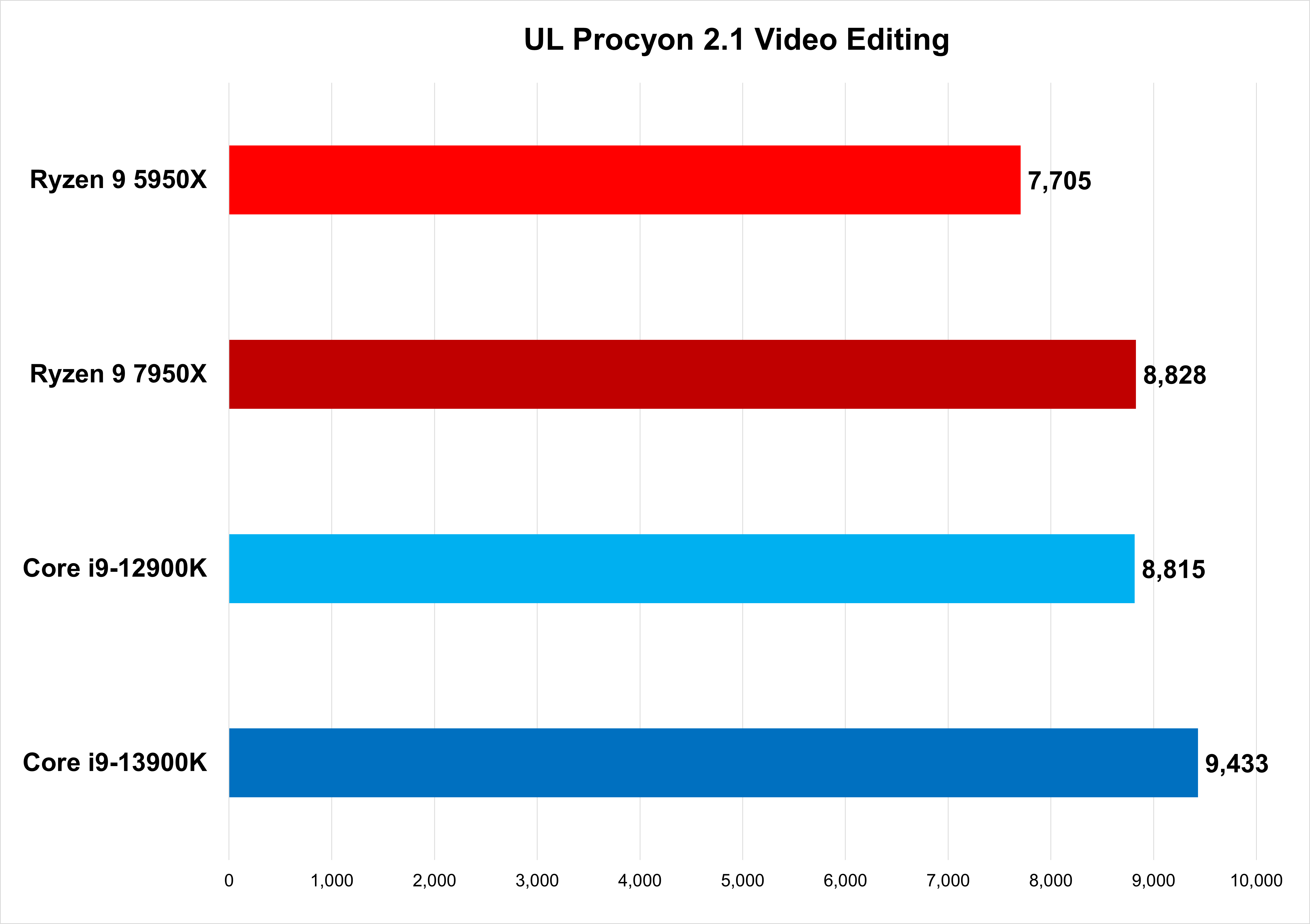


For benchmarks measured in time (seconds), shorter bars are better. Otherwise, longer bars indicate better performance. To view our benchmark charts at full size, right-click (PC) or long press (mobile) on the image and then open it in a new tab or window.
But Intel is more of the winner overall in this dustup, thanks to better integration with popular software like Adobe Creative Suite and its lead in single- and lightly threaded performance. Pragmatically speaking, if you’re a content creator looking solely at numbers and not thinking about outside factors, Intel’s scores average out to form a more appealing picture. The 13900K offers as much as 25 percent higher performance in Adobe Premiere, as Premiere can lean on the chip’s integrated graphics to speed up tasks like editing. Until AMD can get similar support for Ryzen 7000’s integrated graphics, the real-world advantage goes to Intel.
Not everyone uses the same applications, of course. The 7950X isn’t entirely out in the cold—using Premiere again as example, the gap in performance is barely 2 percent when only raw performance is examined. If you’ve gone all in on Davinci Resolve or instead have a workload that involves huge sets of numbers in Excel, you may not really see as much of a difference between Intel and AMD. These two chips keep each other on their toes, with the performance deltas often in the range of single-digit percentages.
Gaming
Superior gaming performance is more of a bragging right than a primary concern for chips like the 13900K—but with pre-launch whispers on the internet about Intel claiming up to 11 percent higher performance in games, it bears a look.
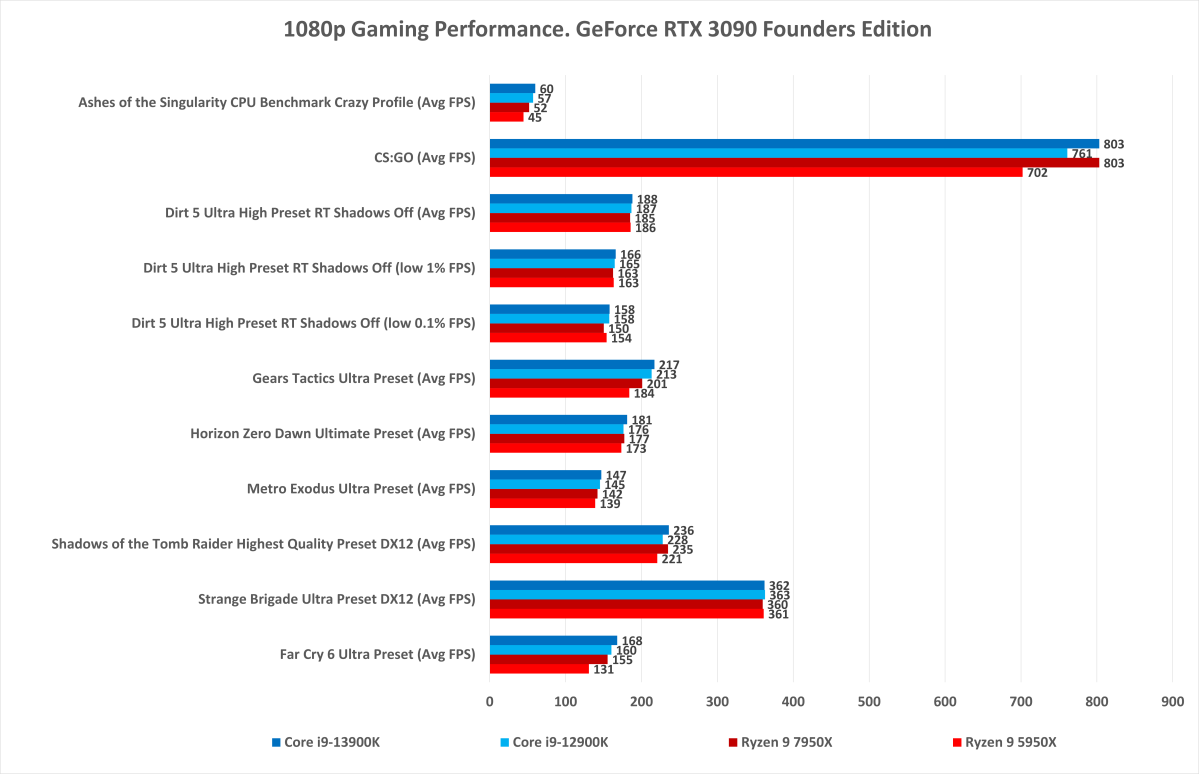
Gordon Mah Ung / PCWorld
Gordon Mah Ung / PCWorld
Gordon Mah Ung / PCWorld
The Core i9-13900K does reach that 11 percent number (and actually exceeds it) in one of our benchmarks, Ashes of the Singularity. But in the others, the difference is far smaller, and more importantly, when you actually look at the numbers themselves, the gap is often just a few frames per second at already high frame rates.
Why the discrepancy? Very likely, differences in testing criteria. Reviewers can choose to isolate CPU performance when benchmarking by dropping to a lower resolution or lower graphics settings. Such settings put less stress on the graphics card, so the burden of work goes back to the CPU. This approach helps identify who has the higher performing architecture.
However, such test conditions sometimes are fairly disconnected from real-world scenarios. So instead, you can test at a more standard resolution (1080p is currently the most popular) and push up the graphics settings to levels that more people chase. In many gaming PCs, the graphics card is the constraining factor, not the CPU.
Our gaming benchmarks reflect the latter approach, which is why the performance difference appears relatively small. But regardless of what reviews you read and what data you see, the main point here is that you’re not getting a major boost gen-over-gen, and both the 13900K and 7950X rock. However, the Core i9-13900K has more right to strut about the barnyard. It’s indeed the world’s fastest gaming chip.
Power draw
Just a couple of years ago, power consumption was not a hot topic when evaluating processors. But today’s chips are pursuing record-breaking performance numbers with less regard to energy use. More fuel for more firepower—right as energy costs are rising or outright spiking.
Intel started down this path with 12th-gen Alder Lake, and the power rating for 13th-gen Raptor Lake has only ramped up. The 12900K has a maximum turbo power (or TDP) of 241W, while the Core i9-13900K sits at 253W.

Longer bars indicate better performance.
Longer bars indicate better performance.
Gordon Mah Ung / PCWorld
Longer bars indicate better performance.
Gordon Mah Ung / PCWorld
Gordon Mah Ung / PCWorld
The good news is that Intel squeezes a heck of a lot of each watt. Even when you dramatically limit the power of the 13900K—as you might do in an effort to curb its energy use—it can still perform about the same as the 12900K at its full 241W. Pretty exciting stuff.
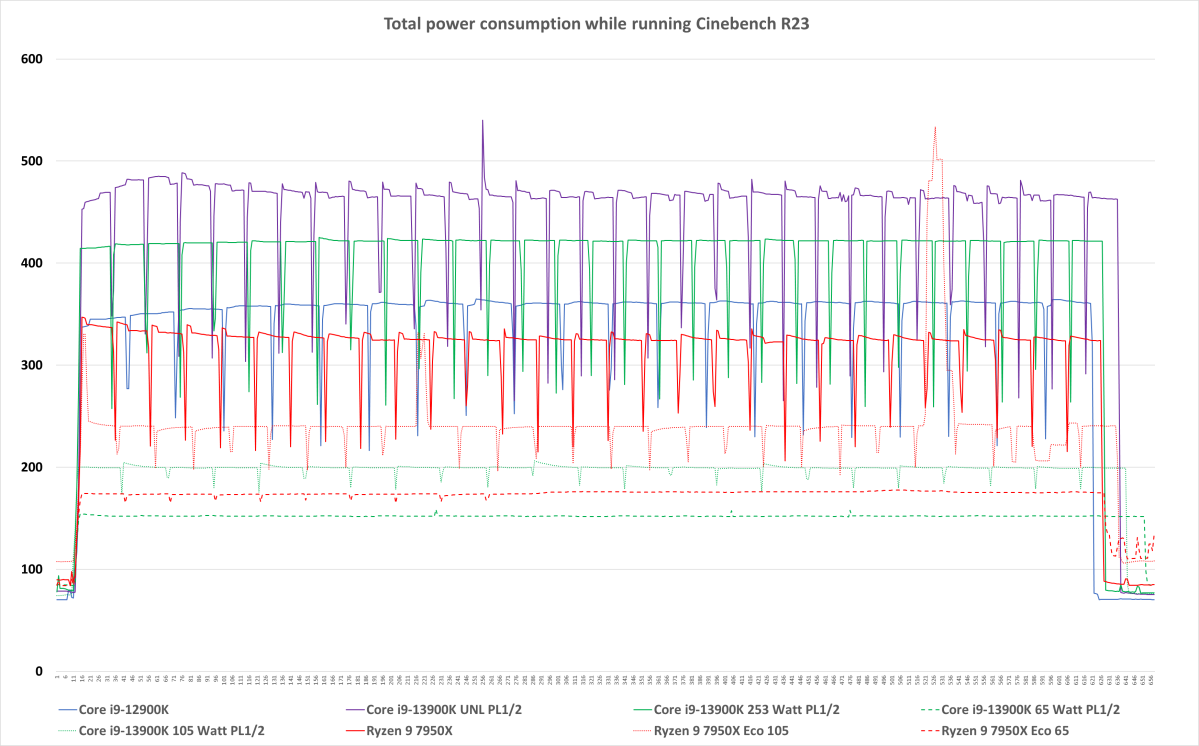
Gordon Mah Ung / PCWorld
Gordon Mah Ung / PCWorld
Gordon Mah Ung / PCWorld
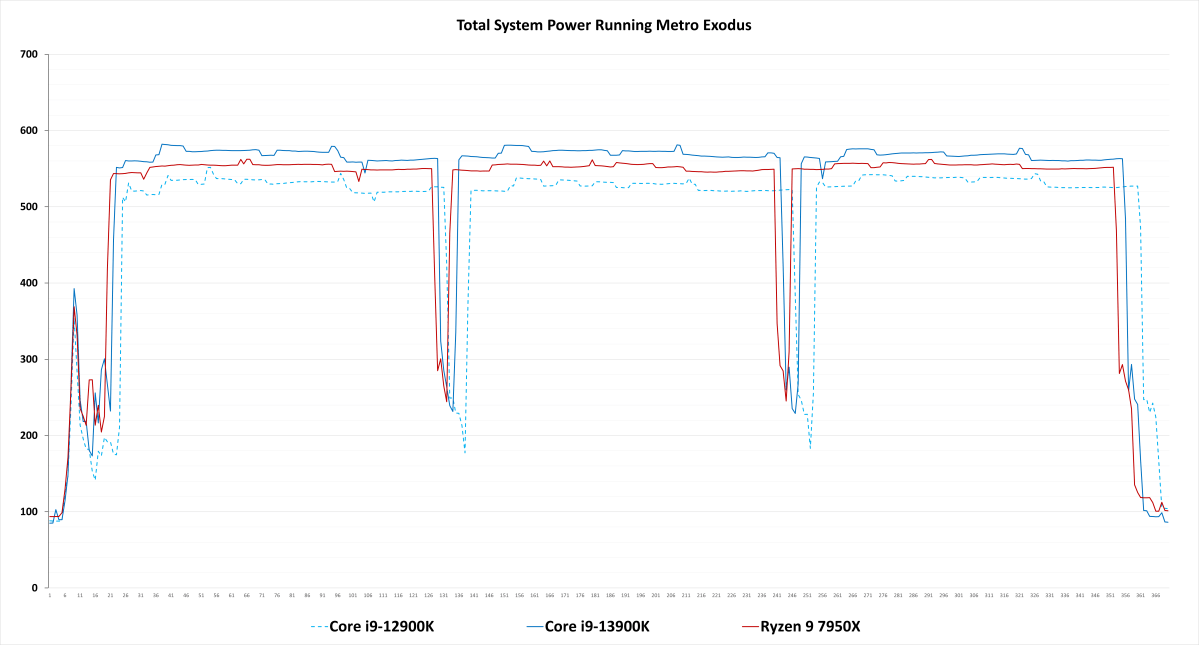
Gordon Mah Ung / PCWorld
Gordon Mah Ung / PCWorld
Gordon Mah Ung / PCWorld

Gordon Mah Ung / PCWorld
Gordon Mah Ung / PCWorld
Gordon Mah Ung / PCWorld
To view our benchmark charts at full size, right-click (PC) or long press (mobile) on the image and then open it in a new tab or window.
As for power draw, it gets a bit more complicated. We’ll cover more of the details in a later article for all the energy nerds out there (hi), but just know that winner on this point depends on the scenario. Sometimes the 13900K is the better chip for conserving electricity, like when power limits are dropped. But under stock scenarios when both chips are at full throttle, the settings most people rely on, AMD’s Ryzen 9 7950X will net you savings in monthly bills.
Overall, just know that the Core i9-13900K can best the 7950X in performance benchmarks, but you’ll spend a bit more in electricity for that privilege.
Final thoughts

Adam Patrick Murray / IDG
Adam Patrick Murray / IDG
Adam Patrick Murray / IDG
The pace of new technology slowed to a crawl since a pandemic enveloped the earth. Now every company is leaping ahead to a new generation all at once. Since fall started, it’s been a rolling wave of CPU and GPU launches—and these chips are more complicated than before. With the hard turn into architectures really put the pedal to the metal (and to heck with the energy costs), you generally have to consider more than just performance numbers when buying a processor.
That said, a high-end chip like the Core i9-13900K is actually an easy chip to decide upon. It evokes the muscle cars of old more than any of the other rip-roaring recent PC releases (Nvidia’s GeForce RTX 4090 possibly excepted). If you spend most of your time in popular programs like Adobe Premiere or games and want the absolutely, positively fastest speeds possible—power be damned, performance be praised—it’s the clear winner. And if you can wait a little longer, stay tuned for next year, when Intel says it’ll release a limited amount of Raptor Lake processors capable of crossing the 6GHz threshold.
These developments are rough for AMD, which should have been able to sit pretty with the 7950X for longer. But as heartless as it is to say, the loss for AMD doesn’t matter much for us in the stands. Its Ryzen flagship chip is still an excellent option, especially if your needs fall outside the parameters that makes Intel’s 13th-gen Raptor Lake CPU so appealing. (And if you want future CPU upgrade options, Intel’s current motherboard lineup is probably at a dead end, while AMD’s AM5 is just getting started.) Great hardware is popping up in spades right now—which means consumers win regardless.
Core i9-13900K
 Price When Reviewed:$659.99Best Prices Today:$659.99 at Antonline | $659.99 at B&H Photo | $659.99 at Newegg
Price When Reviewed:$659.99Best Prices Today:$659.99 at Antonline | $659.99 at B&H Photo | $659.99 at Newegg
Intel Core i9-13900K test machine info

PCWorld
PCWorld
PCWorld

PCWorld
PCWorld
PCWorld


